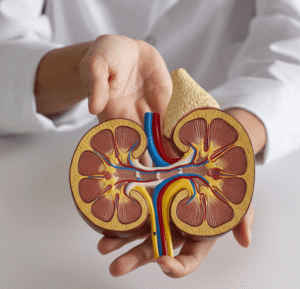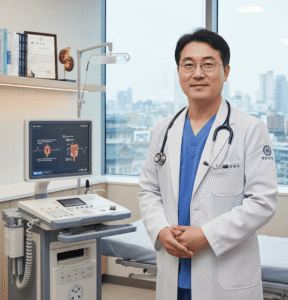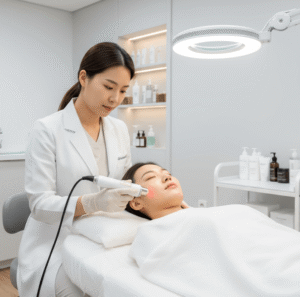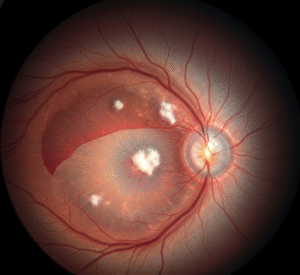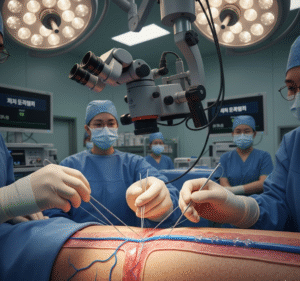What It Is
Cortical shaving of the mandible is a facial contouring procedure that involves smoothing and reducing the outer layer (cortex) of the jawbone without performing deep bone cuts. Unlike full mandibular angle reduction, which removes larger bone sections, cortical shaving focuses on subtle refinements to create a slimmer, smoother jawline.
In Korea, cortical shaving is a popular option for patients who want a more delicate change or refinement of their facial shape. Surgeons use advanced techniques with precision tools, often guided by 3D imaging, to deliver natural results with less invasiveness compared to full jaw reduction.
Why It’s Done
Cosmetic Goals:
- Slims down a slightly wide or bulky jawline
- Softens a square or angular lower face
- Enhances overall facial proportions for a gentle, natural V-line
Functional Considerations:
- Corrects minor jaw asymmetries
- Provides smoother contouring without major skeletal changes
Patient Factors:
- Best for patients with mild to moderate jaw prominence who do not require full bone removal
- Common among women and men seeking a softer, more balanced look
- Suitable for those who want a less invasive alternative to traditional mandibular angle reduction
Alternatives
- Masseter Botox: Reduces the thickness of jaw muscles; effective for muscle-related jaw width but temporary
- Mandibular Angle Reduction Surgery: More extensive bone reshaping for larger jaw correction
- V-Line Surgery: Combines mandibular angle reduction with chin reshaping for dramatic results
- Non-Surgical Contouring: Fillers or fat grafts to improve proportions without bone alteration
Preparation
Before undergoing cortical shaving in Korea, patients typically complete:
- Consultation: 3D CT imaging and facial analysis to assess jaw structure
- Health Evaluation: Blood tests, medical history review, and dental assessments if needed
- Lifestyle Adjustments: Avoid smoking, alcohol, and blood-thinning medications several weeks before surgery
- Pre-Operative Fasting: 6–8 hours prior to general anesthesia
How It’s Done
Type: Surgical, performed under general anesthesia
Duration: 1.5–3 hours, depending on complexity
Procedure Steps:
- Incision is made inside the mouth, ensuring no visible external scar
- The jawbone’s outer cortical layer is carefully exposed
- High-precision tools are used to shave and smooth the bone surface
- The surgeon refines both sides symmetrically for a balanced contour
- Incisions are closed with dissolvable stitches
Hospitalization: Usually 1 night for observation, though some cases may be outpatient
Recovery
- First Few Days: Swelling and mild discomfort managed with pain medication and cold compresses
- Diet: Soft or liquid diet due to intraoral incisions
- Oral Care: Antiseptic mouth rinses to prevent infection
- Downtime: Most patients return to work or school within 1–2 weeks
- Final Results: Visible after 2–3 months as swelling subsides and tissues settle
Possible Complications
As with any surgery, cortical shaving carries risks:
- Swelling and bruising (common during recovery)
- Infection at incision site (reduced with proper care)
- Temporary numbness in the chin or lower lip due to nerve proximity
- Jaw asymmetry if bone is shaved unevenly (rare with experienced surgeons)
- Dissatisfaction with results if expectations are not aligned pre-surgery
Treatment Options in Korea
Diagnosis
Korean clinics rely on:
- 3D CT Scans to evaluate bone structure
- Computer Simulations to preview results
- Specialist Consultation with maxillofacial and plastic surgeons for tailored planning
Medical Treatments
For patients not ready for surgery:
- Masseter Botox for muscle-related bulk
- Fillers or fat grafting to adjust balance between jawline, chin, and cheeks
Surgical or Advanced Therapies
- Cortical Shaving Alone: For patients needing mild refinement
- Combined with Chin Surgery: For harmony in the lower face
- Hybrid Procedures: Sometimes paired with mandibular angle reduction or zygoma surgery for more dramatic contouring
Rehabilitation and Support
- Regular follow-up appointments to ensure proper healing
- Swelling reduction therapies, including lymphatic massage, widely available in Korean clinics
- International patient support with translators, transportation, and post-surgical recovery services



